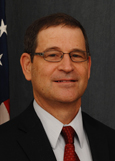Q&A: The BSEE's Latest OCS Safety Program Initiative

Following the Deepwater Horizon incident in April 2010, which led to the largest oil spill in U.S. waters to date, the Bureau of Safety and Environmental Enforcement (BSEE) has strived to ensure the U.S. Outer Continental Shelf never experiences a similar event.
In the years following the tragedy, the BSEE has launched numerous programs and regulations in a bid to increase safety on the OCS. Although some of these items were received better than others by the oil and gas industry, as evidenced by the sector’s lukewarm response to a proposed well control rule in July last year, the organization’s unrelenting quest to improve offshore activity in the United States has undoubtedly changed the region for the better.
The BSEE revealed in its first ever annual report, released May 5, 2015, that fatalities on the OCS were at their lowest level for several years and that the total number of injuries recorded in the area had seen a gentle declining trend since 2007. The latest data showed that musters for evacuation on the OCS were also decreasing and that the number of fires/explosions in the region had reduced in four of the last six years.
Just last month, the BSEE launched its most recent safety program in an effort to improve its focus on offshore oil and gas facilities that exhibit a number of distinguishing risk factors. The pilot Risk-Based Inspection Program, which will complement the organization’s existing inspections and audits, will use a systematic approach relying on both a quantitative model and qualitative performance and risk-related data. BSEE will use performance and compliance data collected from annual inspection and SEMS (Safety and Environmental Management Systems) audits, as well as incident investigations and other reportable safety information, to help identify offshore production facilities with a higher risk profile.

Bureau of Safety and Environmental Enforcement
In order to better understand the intricacies and implications of the BSEE’s latest safety program, Rigzone spoke to BSEE Director Brian Salerno.
Rigzone: What will the pilot Risk-Based Inspection Program involve exactly?
Salerno: The pilot Risk-Based Inspection Program will combine a quantitative model with qualitative real-world assessment to develop a focused, efficient inspection program that makes the best use of our inspection and audit resources. In the coming weeks, BSEE will be selecting a number of offshore facilities as pilot sites for the program and notifying the operators of their inclusion. We will then apply a quantitative risk model to each facility, and identify five to undergo focused inspections and comprehensive reviews with an inspection team.
Rigzone: Will this program improve offshore safety in the United States?
Salerno: Yes, we believe that this program will enable our inspectors to focus their attention on the facilities with the most significant risk factors – that is not to say that these facilities have bad safety records or are poor safety performers, only that they have known risk factors – and help them determine how best to manage their risk.
Rigzone: When will you be carrying out the pilot?
Salerno: Subject Matter Experts (SME) at BSEE are already working to compile a list of pilot sites for the Risk-Based Inspection Program. We anticipate completing this step and notifying the operators of included offshore facilities early in 2016.
No companies are being targeted. We are selecting a representative sample of offshore facilities and applying the new quantitative model in order to identify those facilities, not operators, with particular types and levels of risk. When we are ready to identify the facilities that have been selected for the pilot Risk-Based Inspection Program, we will reach out to their operators directly.
Rigzone: If the pilot is successful, what are the next steps?
Salerno: Upon completion of each facility inspection and review, the BSEE team will discuss with the operator the areas needing attention or improvement. BSEE will then ask the operator to develop an action plan addressing the areas identified. If this pilot proves to be a useful and efficient way for BSEE to allocate our inspection and audit resources, we may roll out the Risk-Based Inspection Program on a larger scale.
Rigzone: Do you have any other programs or pilots lined up in the near future?
Salerno: There’s nothing else planned in the near future.
Rigzone: Are you finding any trends or correlations related to safety among U.S. offshore operators amid the current low oil price?
Salerno: I am concerned about the impact of persistently low oil and gas prices on offshore safety. If prices stay low, companies may spend less on training personnel, maintenance may be delayed and other cost-cutting measures may be taken. The longer the ongoing industry downturn extends, there’s always the worry that safety starts to slip, and accidents increase.
Rigzone: Over the last decade, has safety offshore U.S. improved or declined?
Salerno: It is difficult to say because occurrences of certain types of incidents have decreased, while rates of other types of incidents have stayed the same or even increased. For example, there has been a steady decrease in fatalities and major injuries, but we have seen increases in fires and explosions per installation, major spills, releases of gas and hydrogen sulphide, and lifting incidents.
However, I think overall the U.S. Outer Continental Shelf is safer today than it was ten years ago. Every operator is now required to have developed and implemented a Safety and Environmental Management System (SEMS), a performance-focused tool for integrating and managing various aspects of offshore operations including human behavior, organizational structure, leadership, and processes and procedures. The offshore industry has also put in place a number of updated standards and best practices in the wake of the Deepwater Horizon tragedy, and BSEE is in the process of incorporating many of these into our regulations, adding the force of law to these important safety standards.
WHAT DO YOU THINK?
Generated by readers, the comments included herein do not reflect the views and opinions of Rigzone. All comments are subject to editorial review. Off-topic, inappropriate or insulting comments will be removed.
- USA Regional Banks Dramatically Step Up Loans to Oil and Gas
- Oil Markets Were Already Positioned for Iran Attack
- An Already Bad Situation in the Red Sea Just Got Worse
- Valeura Makes Three Oil Discoveries Offshore Thailand
- EU Offers $900MM in Funding for Energy Infrastructure Projects
- Chile's ENAP Says Working on Decarbonization Plan
- Germany to Provide $2.3B Aid for Decarbonization of Industrial Sectors
- Mexico Presidential Frontrunner Plans to Spend Billions on RE, Gas Power
- North America Breaks Rig Loss Streak
- Macquarie Strategists Warn of Large Oil Price Correction
- JPMorgan CEO Says LNG Projects Delayed Mainly for Political Reasons
- USA, Venezuela Secretly Meet in Mexico as Oil Sanctions Deadline Nears
- EIA Ups Brent Oil Price Forecast for 2024 and 2025
- Petrobras Discovers Oil in Potiguar Basin
- EIR Says Oil Demand Will Not Peak Before 2030
- Biden Plans Sweeping Effort to Block Arctic Oil Drilling
- Pantheon Upgrades Kodiak Estimates to 1.2 Billion Barrels
- Dryad Flags Red Sea 'Electronic Warfare' Alert
- Russian Oil Is Once Again Trading Far Above the G-7 Price Cap Everywhere
- Oil and Gas Executives Predict WTI Oil Price
- New China Climate Chief Says Fossil Fuels Must Keep a Role
- Chinese Mega Company Makes Another Major Oilfield Discovery
- Oil and Gas Execs Reveal Where They See Henry Hub Price Heading
- Equinor Makes Discovery in North Sea
- ExxonMobil Racks Up Discoveries in Guyana Block Eyed by Chevron
- Macquarie Strategists Warn of Large Oil Price Correction
- DOI Announces Proposal for Second GOM Offshore Wind Auction
- Standard Chartered Reiterates $94 Brent Call
- Chevron, Hess Confident Embattled Merger Will Close Mid-2024







